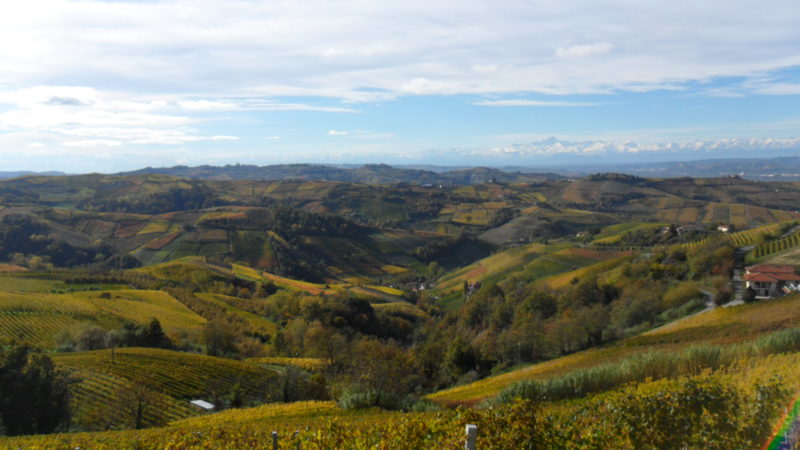My visit to the Cooper, Gamba Botti
/by: Amanda
It is interesting because we always talk about visiting wineries and food producers but we never think about going to visit probably one of the most important things in wine making especially the aging of wines, the cooper! I recently had the chance to go and visit one of the last remaining 2 coopers in Italy and it was an amazing and very educational experience. Gamba is a 3rd generation cooper aging and working here in Piemonte, in Castell’Alfero to be exact. In this small village of Castell’Alfero Gamba Botti believes that this village has the best micro climate for the seasoning of their wood planks used to make these barrels. The seasoning process will typically range from 3 to 5 years, outside in the natural weather conditions to help take out the green phenolic components that are naturally occurring in the wood. By storing these staves outside they are exposed to wind, heat, rain, snow, cold temperatures that in time will help the wood to go through its proper maturation process. This is important so the final product does not give off foul or strange flavors to the wines.
Where everything starts, as Gamba works only with French oak that is sourced from several different parts of France. The forests or gardens as they call them are located in Nevers, Allier, Cher, Vosges, Troçais, Fontainbleauk Bourgogne, and Limousin. Keeping in mind we will talk later a bit more about the Allier forest and what special qualities this particular wood has. It is interesting and the thing that made me really think, I am not going to hide it, I am a lover of tradition and traditionally made wines, and so Slavonian oak for me for Nebbiolo is always number one. But you know what I have recently discovered? Was that French oak and Slavonian oak have one thing in common, they are the same species of Quercus genus. The two species best for barrel making are Quercus Peduncolata and Quercus Sessilis, the difference however coming from France of Croatia are the soil and climate but also the age of the trees. In France they will actually have gardens where they maintain these trees in such a way that they will grow straight, they will also never cut a tree before 120 years of age because that is the perfect age for the size and maturation of the trees. With these trees because for the staves for the barrels must be straight, the grain must grow in the same direction, and there can be no burls, and you will need a tree larger enough and tall enough in order to get the most out of the wood. If you think about the amount of waste from these trees to make the final product is quite impressive.
In the forest Allier, they will typically grow the Quercus Sessilis and in this forest you will find the soil to be much more clay, siliceous and not very fertile. Here the trees grow much slower and will produce a trunk much more thin. The grain of the wood grown here in Allier is fine and more compact but porous, making this wood perfect for oxygenation. The oxygenation process is very helpful for some wines like Barbara and Dolcetto who will tend to go into reduction quite quickly, by giving oxygen to these wines the wines are able to breath and will rid any off notes that might be a bit off.
Now we shall talk about the more romantic part of barrel making, and that would be the toasting. For Barrique barrels the staves are toasted with fire, this method is called a toast check. This process is a controlled amount of fire at a lower temperature to create a slower toasting process, this helps to make sure that the inner part of the barrel does not burn or blister, and thus will result in a sweeter toast with much better flavor profile.
This toasting process also helps to form the barrels, as the staves warm up from the heat of the fire they are more malleable and thus can be bent to shape the barrel. This process will happen one side at a time with constant breaks for the wood to cool down to maintain temptress lower so the wood doesn’t burn and create off flavors.
Once the barrel has been shaped now comes the fun part, putting the heads on the barrel. Basically for one side you can take and push up the head of the barrel until it fits, for the other side you will need to use a crowbar like tool that will be inserted into the bung hole of the barrel and will act like a hammer to hammer the other head into place. We joked about how many swear words go into getting this thing in place, because it did not look easy.
After all this is said and done the barrels are then ready to be finished and wrapped and then sent off all over the world.
Gamba Botti makes quite the array of sizes of Barrique of 114, 225, 300, 350 liters, Tonneaux of 500 and 700, as well as Botti Grande (big casks) from 1,000 to 10,000 liters, on special requests these barrels can also be made bigger.

































































